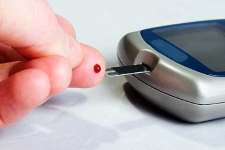 We all love to eat, but unfortunately everything we love to eat has some traces of sugar in it. Sugar is not always a bad thing. All our cells and organs depend on it, including our muscles and brain, and it serves as an important source of energy. Although we can’t exist without it, there is a darker side to sugar. When consumed in certain forms or in excess, sugar has damaging effects on our health. In particular, high insulin levels, a risk factor for diabetes, are closely related to sugar. Let’s take a closer look at what this food does to the body.
We all love to eat, but unfortunately everything we love to eat has some traces of sugar in it. Sugar is not always a bad thing. All our cells and organs depend on it, including our muscles and brain, and it serves as an important source of energy. Although we can’t exist without it, there is a darker side to sugar. When consumed in certain forms or in excess, sugar has damaging effects on our health. In particular, high insulin levels, a risk factor for diabetes, are closely related to sugar. Let’s take a closer look at what this food does to the body.
Sugar and Insulin
During digestion, sugar in food is turned into glucose and insulin. Insulin is a hormone made in the pancreas that’s necessary to convert glucose into energy. In individuals with type 2 diabetes, the pancreas produces insufficient insulin and supplemental insulin may be required. In cases of type 1 diabetes, no insulin is produced and patients must take insulin injections. Without insulin, glucose cannot enter your cells and be used for activity. Instead, it remains in the blood stream and can lead to stress on the kidneys and other complications.
Sugar is present in a variety of forms in most of the foods we eat. Not only found in the candy, soda and desserts, sugar is present in virtually all carbohydrates. Sometimes sugar is naturally occurring, as in fruits, vegetables and grains. Other times, artificial sugars are added to enhance flavor, texture or shelf life. Crackers, white bread, yogurt and salad dressings all contain added sugar.
As you may have guessed, natural and artificial sugars are not created equal. Many fruits and vegetables, such as sweet potatoes, are low on the glycemic index. This means they are converted to glucose slowly, keeping the amount of sugar in your blood from spiking rapidly.
Other foods, like soda, candy and white table sugar are high on the glycemic index and cause rapid increases in blood sugar levels, making the pancreas work hard to quickly produce enough insulin. Regularly eating foods that are high in added and artificial sugars can wear out the body over time. You may become insulin resistant, meaning that your cells no longer recognize the glucose-lowering effects of insulin.
Keeping Sugar in Check
Giving up sugar completely is bad for your health, and furthermore, it is unnecessary. If you gave up sugar, you could no longer eat foods like oranges, berries, tomatoes, peas and brown rice. All of these nutritious foods are packed with vitamins, minerals and antioxidants. So what is the best course of action? I recommend that you try to avoid insulin resistance by paying attention to the types of sugars you consume.
The first step to take is to avoid processed foods as much as possible. When you’re grocery shopping it’s important to read ingredient labels to recognize the amounts of added sugar in various food items. Sugar has many chemical names, such as sucrose, fructose, dextrose, corn syrup, high fructose corn syrup and maltose. Natural or homemade foods are a better choice because you will know if a food contains sugar and how much. For example, you can make salad dressing with olive oil and vinegar in seconds, rather than using a store bought product that is high in sugar and other artificial ingredients.
Another way to keep blood sugar and insulin levels steady is to eat frequent small meals. When you go for several hours without eating, the level of sugar in your blood dips low and insulin production is halted. When you finally eat, the body must quickly adapt to the rapid influx of sugar in your blood. Instead of eating three large meals, scale down the size of breakfast, lunch and dinner and add two substantial snacks. For example, have a small bowl of oatmeal with almonds at 8 am and an apple and string cheese at 10:30 am. This will help you prevent from becoming ravenous and keep your blood sugar on an even keel.
I know the relationship between sugar and insulin is a complicated one. Many factors come into play, and it takes time to learn which foods keep blood sugar stable and which ones lead to unhealthy highs and lows. Discuss your diet with your doctor or a registered dietitian. Changing the way you consume sugar will reduce your risk for insulin resistance, type-2 diabetes, and obesity. Remember, there’s nothing sweeter than good health!
Stay Well,
Mark Rosenberg, M.D.

